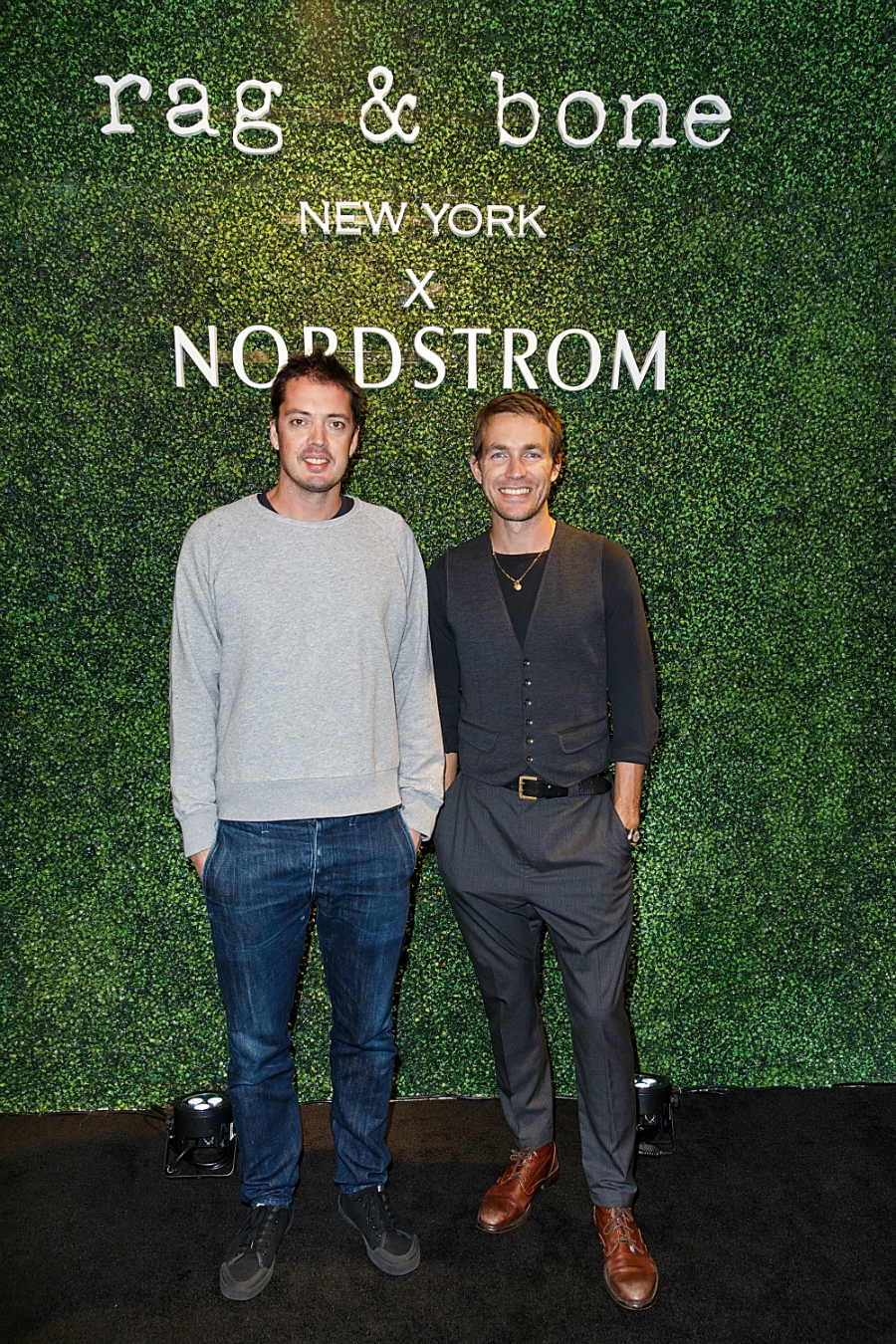What Constitutes Luxury?
Marcus Wainwright and David Neville of Rag & Bone.

Marcus Wainwright and David Neville, co-founders of Rag & Bone, are relaxing in a private room on the second floor of Vancouver’s Nordstrom. They are here for a cocktail party, scheduled later in the evening, to promote the spring/summer 2016 collection. While waiting they discuss the way the word luxury has been compromised by its tedious overuse. “The word is sort of battered around these days,” Neville explains. “It’s somewhat of a trick as well. For a lot of brands, there’s a new wave of ‘affordable luxury’, and [consumers] think they’re buying a luxury brand, but they’re not really.”
“To us,” Wainwright says, “luxury is craftsmanship, authenticity, and attention to detail . . . Luxury still means what it does to the older consumer . . . Louis Vuitton, Hermès, other old French legacies—brands with history.” For the Millennials, the duo agrees, the concept has changed.
Although Rag & Bone is relatively young, the brand already has an impressive history of its own. Neville and Wainwright had no formal training when they decided to start crafting jeans in 2002, but their intuitive understanding of quality quickly established their denim as a national favourite. By 2005, the label expanded to include a full range of ready-to-wear men’s and women’s collections, with an overall aesthetic inspired by both New York and British style. In 2010, Wainwright and Neville were deemed Menswear Designers of the Year by the Council of Fashion Designers of America.
Neville believes savvy branding is key to Rag & Bone’s success. “We work really hard on our brand . . . ” he says, “and ultimately, it’s honest. The point of view comes from the fact that we’re English and we live in New York City; we’ve built the aesthetic of the brand based on our journey.” Of course, creative evolution is also crucial to maintain relevance, and Rag & Bone understands this well. In 2014, the duo decided to promote new collections not only through the traditional video recording of a collection’s runway premiere, but also through a longer film campaign that included direction and a narrative arch. “In the digital era, you can create a piece of content that will actually reach people,” Neville explains. “We felt like if we could do that in an innovative way, it would differentiate us a little bit . . . Most importantly, you can actually reach people on social media based on the fact that people are living their lives through the feed on their phones. So, we’re adapting to the digital era.” For the brand’s fall/winter 2014 film campaign, Winona Ryder wins big at the arcade on Coney Island, dressed in moody, monochrome pieces. And for fall/winter 2015, a cement brick is released onto a 1979 Porsche 911 SC, while British actress and model Gabriella Wilde—aloof in a lingerie-inspired dress and a long, high-shine black trench coat—remains cool and composed, the essence of Rag & Bone’s aesthetic.
Their trademarked cool is apparent in the military parachute–inspired spring/summer 2016 collection, described by Wainwright as “effortless, urban, and feminine”. Although Wainwright admits the future is never certain in the fashion industry, their continued inventive eye and creative brand development gives hope to the label’s longevity.




